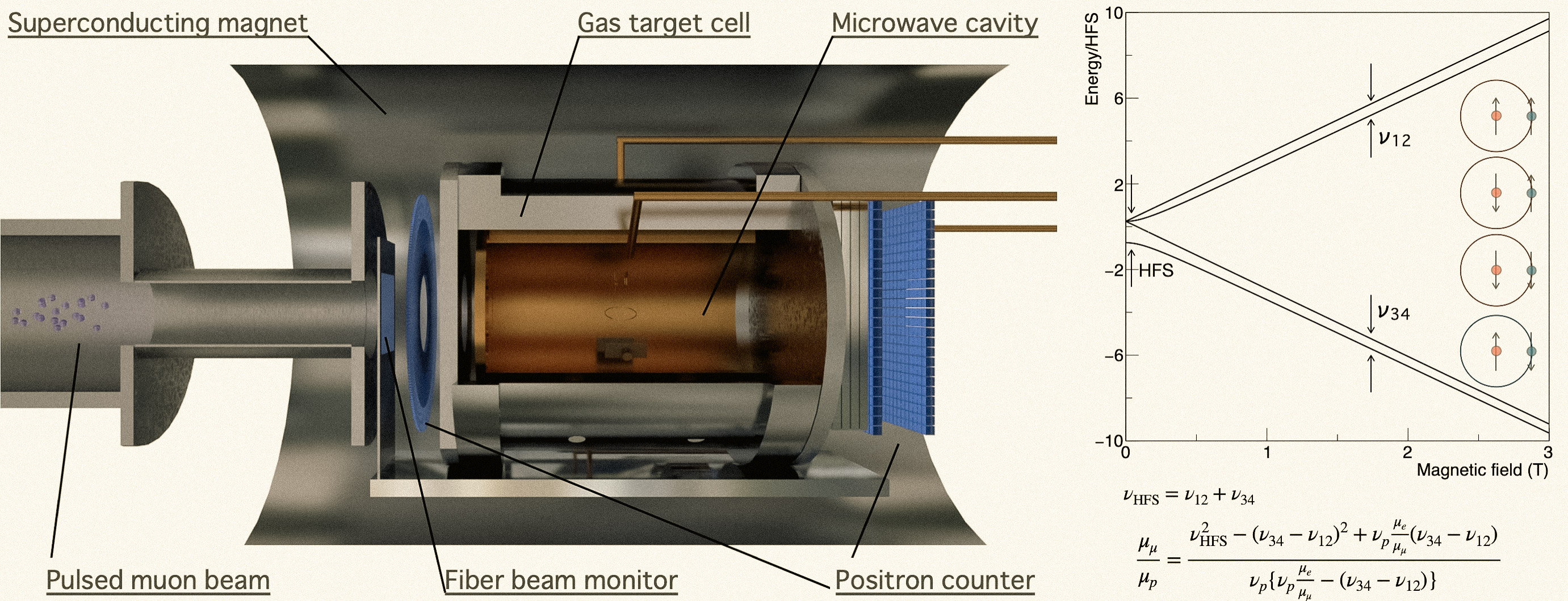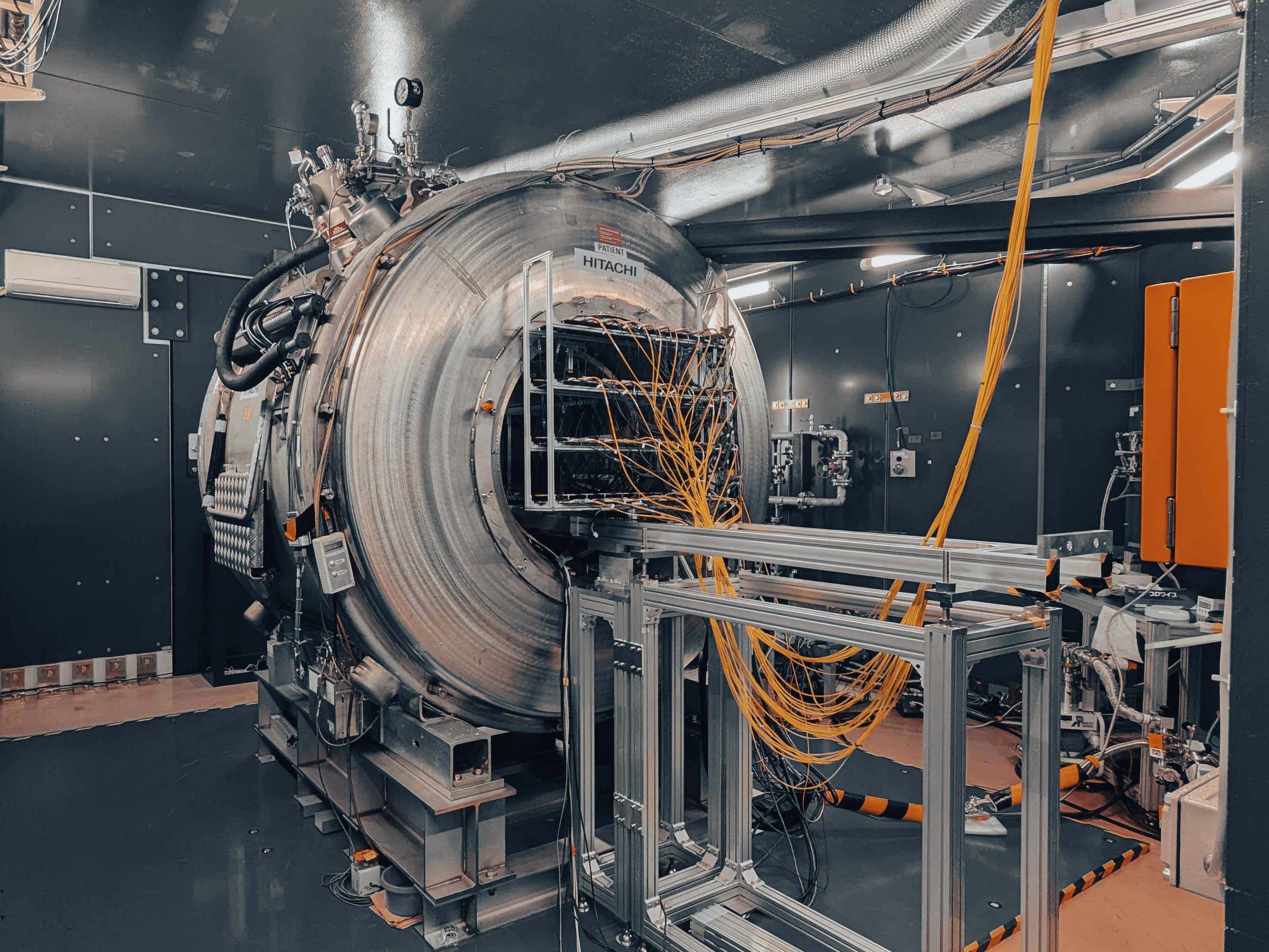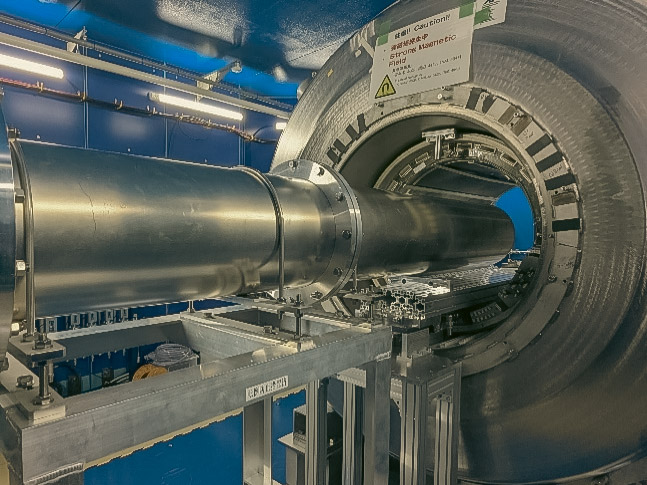MuSEUM High-Field
Precise spectroscopy of the muonium HFS under a high magnetic field
Introduction: Towards the Highest Precision
The precise measurement of the hyperfine structure (HFS) of muonium is an extremely powerful tool for rigorously testing the Standard Model of particle physics, including Quantum Electrodynamics (QED), and for searching for new physics. In its zero-field experiments, the MuSEUM collaboration successfully established a measurement methodology using a pulsed muon beam and developed a new analysis technique called “Rabi-oscillation spectroscopy,” achieving the world’s highest precision for a zero-field HFS determination. However, to achieve the experiment’s ultimate goal—to search for cracks in the Standard Model and determine fundamental constants with the highest possible accuracy—it is necessary to improve upon the precision of previous experiments by more than an order of magnitude. This requires moving to a high-magnetic-field environment.
Principle and Advantages of High-Field Spectroscopy
In a strong magnetic field, the energy levels of muonium are split into four sublevels by the Zeeman effect. While the zero-field experiment measures the direct transition between the spin-singlet and triplet states (at approx. 4.5 GHz), the high-field experiment measures the transitions between two pairs of these split sublevels (e.g., ν 12≈1.95 GHz and ν34≈2.65 GHz in a 1.7 T field) by inducing them with microwaves. The HFS interval, νHFS, is then obtained from the sum of these measured frequencies: νHFS=ν12+ν34.
This method offers several key advantages:
Increased Signal Strength: In a high magnetic field, the muonium spin polarization is maintained at 100%, which in principle doubles the signal strength compared to the zero-field case (50%). Furthermore, the strong field focuses the decay positrons toward the detectors, enhancing the detection efficiency. Simultaneous Determination of Physical Constants: By measuring the two transition frequencies, it is possible to simultaneously determine not only the HFS but also the magnetic moment of the muon (specifically, its ratio to the proton’s, μμ/μp) with world-leading precision.

The Experimental Apparatus for Ultra-Precise Measurement
To realize this challenging measurement, a state-of-the-art suite of instruments has been developed, building upon the knowledge gained from the zero-field experiments.
H-Line: The World’s Most Intense Pulsed Muon Beamline
The experiment will be conducted at the newly constructed high-intensity H-Line at the J-PARC Materials and Life Science Experimental Facility (MLF). This beamline provides a pulsed muon beam with an intensity that is orders of magnitude higher than the D-Line used previously, which is the key to dramatically improving statistical precision.
Superconducting Magnet and Field Homogeneity
A superconducting magnet, originally designed for medical MRI, has been adopted to generate the strong magnetic field. Precision HFS measurement demands an extremely high magnetic field homogeneity of ±0.2 ppm over a large volume (a 20 cm diameter, 30 cm long spheroid) where the muonium atoms are formed. To achieve this, a technique called “shimming” was used, where iron pieces are precisely placed inside the magnet to correct for field distortions.
High-Precision Magnetic Field Measurement
To precisely monitor the absolute strength and stability of the magnetic field, which is one of the largest sources of systematic uncertainty, Nuclear Magnetic Resonance (NMR) probes using pure water are employed. An array of 24 NMR probes has been developed to map the field distribution and constantly monitor any field fluctuations during the experiment.


Expected Precision and Future Outlook
The goal of the MuSEUM high-field experiment is to surpass the precision of the previous leading experiment at LAMPF (12 ppb) by an order of magnitude, reaching the 1 ppb level. With the beam intensity of the H-Line, it is expected that a statistical precision of 1.2 ppb can be achieved in 40 days of measurement. Systematic uncertainties are estimated to be controllable to a similar level, placing the target precision well within reach.
Current Status (June 2025)
After years of development and preparation following the zero-field experiments, the MuSEUM collaboration has reached a historic milestone. Beam delivery from the newly constructed H-Line has commenced, and following this, the first engineering run of the high-field experiment has begun.
The purpose of this engineering run is to integrate and commission all components—the superconducting magnet, microwave system, particle detectors, and data acquisition systems—under actual beam conditions, and to evaluate and optimize their combined performance. After this final tuning phase, the collaboration will be ready to transition to full-scale physics data acquisition to challenge one of the most precise tests of fundamental physics. The quest for an unprecedented level of precision is about to begin.